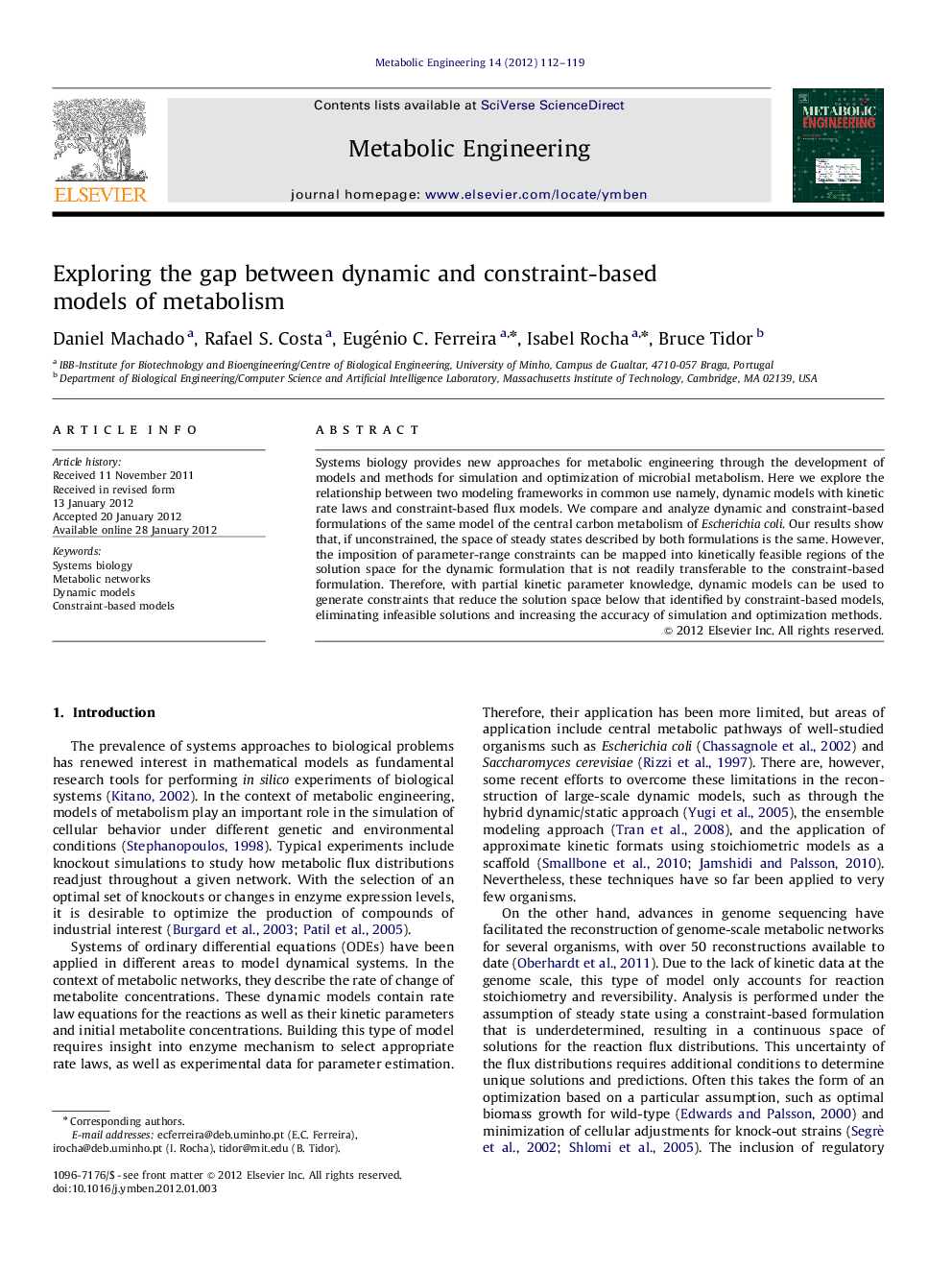| Article ID | Journal | Published Year | Pages | File Type |
|---|---|---|---|---|
| 31580 | Metabolic Engineering | 2012 | 8 Pages |
Systems biology provides new approaches for metabolic engineering through the development of models and methods for simulation and optimization of microbial metabolism. Here we explore the relationship between two modeling frameworks in common use namely, dynamic models with kinetic rate laws and constraint-based flux models. We compare and analyze dynamic and constraint-based formulations of the same model of the central carbon metabolism of Escherichia coli. Our results show that, if unconstrained, the space of steady states described by both formulations is the same. However, the imposition of parameter-range constraints can be mapped into kinetically feasible regions of the solution space for the dynamic formulation that is not readily transferable to the constraint-based formulation. Therefore, with partial kinetic parameter knowledge, dynamic models can be used to generate constraints that reduce the solution space below that identified by constraint-based models, eliminating infeasible solutions and increasing the accuracy of simulation and optimization methods.
► Constraint-based and full kinetic models share the same set of steady states. ► Partial rate-constant knowledge can further constrain kinetic models. ► Such reductions can be transferred from kinetic to constraint-based formulations.
